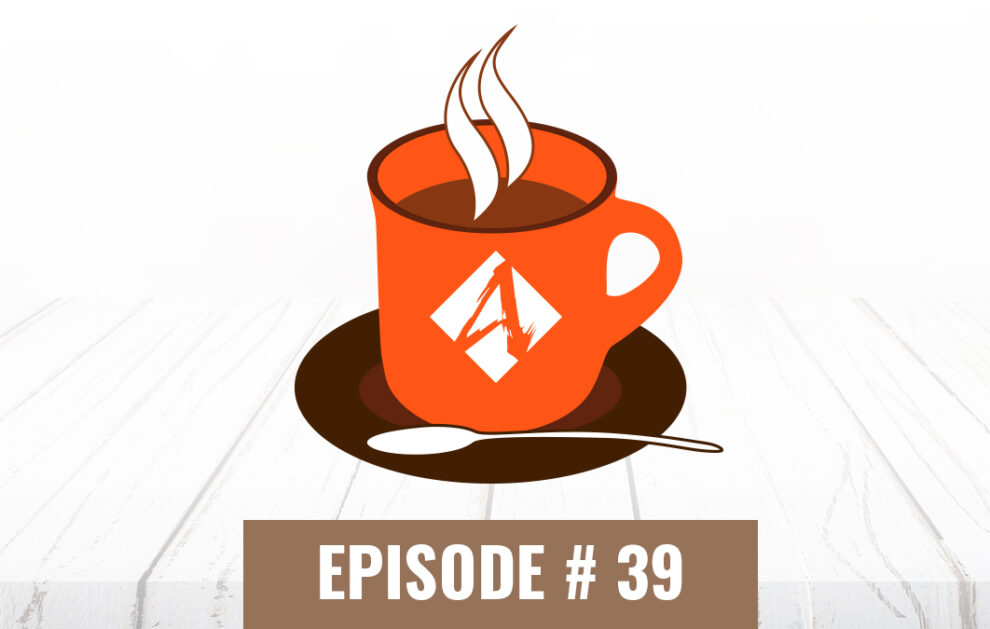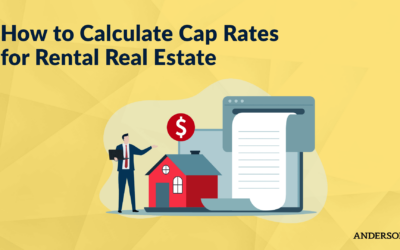In this episode of Coffee with Carl, attorney Carl Zoellner explains the basics of equity stripping and how this strategy can be useful to deter potential lawsuits.
Updated November 30, 2020
Equity stripping involves exactly what it sounds like: removing equity from an asset. Why would anyone want to do that? As we’ll see, in some circumstances equity stripping is a great tool for asset protection.
Pros and Cons of Equity Stripping
PROS
- More Money to Invest
- Can Facilitate Continued Use of Asset
- Makes Property Less Attractive to Creditors
CONS
- Requires Debt
- Risky Strategy
- Predatory Lending
What is Equity?
Before discussing equity stripping, it’s important to solidify our understanding of the word equity, especially as it relates to assets like real estate. In business terms, equity is the amount of money that would be returned to an investor or owner if all the company assets were liquidated and all debts paid off.
For homeowners, home equity is the difference between the home’s market value and all outstanding liens against the property (for example, the mortgage). This may or may not be equal to the amount of money a homeowner has put into the home. Two factors that must be considered are the interest rate of the mortgage and real estate market fluctuations. By and large, though, home equity is largely associated with the idea of how much ownership a homeowner has in their property.
If a homeowner owns a property with a market value of $500,000 and has paid off a portion of their mortgage so that they only owe $250,000 outstanding, their share of home equity is $250,000. As you might guess, the real estate market and interest rates can seriously impact home equity. For instance, if real estate market took a hit and this property’s value plummeted to $450,000, it would lower the homeowner’s equity in the property to $200,000.
The equation is even more complicated by interest rates. Some borrowers choose to take out a fixed rate loan, which (as its name implies) has an interest rate that is locked in place for the duration of the loan. Other lenders opt for a variable interest rate loan, which fluctuates according to the prime rate set by the United States Federal Reserve. If the housing market takes a hit, a variable interest rate on the home loan would go up, increasing the outstanding balance on the mortgage.
You might be wondering why all this matters. On a day-to-day basis, it doesn’t affect most property owners, but there are situations that will come up for most individuals where home equity truly does matter.
One overarching consideration is that home equity is a sort of forced savings account. If a homeowner has paid off their mortgage entirely (an accomplishment that takes many homeowners 30+ years), and there are no other liens on the property, then they own their home outright.
Returning to our example above, if the individual with a property appraised at $500,000 sold their fully-owned home, they would have half a million dollars in cash. Looked at another way, they are sitting on a $500,000 savings account. But if home prices dip and interest rates go up (assuming they had a variable rate mortgage) and they still have an outstanding balance on their home loan, they would see—in the specific example used above—their savings account cut in half.
Home equity can also affect other types of financing, such as a vehicle loan, college loan, or personal loan. The lender will examine their assets to determine how much credit to extend, as well as set other terms of the loan. Individuals with a larger amount of home equity are in a better position to get more favorable loans because they demonstrate a greater degree of financial solvency. They also offer more sizable collateral to reduce the bank’s risk. Home equity is also considered when a homeowner needs to pay off their debts or restructure financially through bankruptcy.
What Is Equity Stripping?
So now that we know what equity is and why it matters, we can look at what equity stripping is about. As mentioned above, equity stripping involves reducing one’s equity in the property, primarily as a strategy to protect the asset from hungry creditors.
There are two types of equity stripping. One of them is a predatory lending mechanism, which we will touch on briefly here without going into too much detail. This form of equity stripping involves a real estate investor buying a property from a homeowner facing foreclosure. The investor then leases or rents the property back to the owner. It’s an arrangement that works out nicely for the investor. They get a property at a discounted price from an extremely motivated seller, and a property that’s already occupied with a tenant! In any case, there are non-predatory forms of this type of equity stripping, but it’s primarily a strategy leveraged against desperate homeowners with little information or financial resources.
The idea of equity stripping as a mechanism for asset protection is what we will be focusing on in this article. In this form of equity stripping, the property owner will reduce the equity in the property by giving a third party a claim against the property. In the meantime, the owner retains ownership of the property and continues to enjoy its cash flow, but the property itself becomes much less attractive to creditors, should they want it as collateral or sue to exercise legal judgment against the owner. This strategy makes it harder for creditors to take the asset because the owner is no longer the only party they would have to contend with in court.
Let’s take a look at some of the benefits of equity stripping.
Pros of Equity Stripping
More Money to Invest
One side benefit of equity stripping is that it can provide the investor with more money to invest. That’s because an easy form of equity stripping involves taking out a loan against the property, like a mortgage, second mortgage, or HELOC (home equity line of credit).
These loans are granted to the property owner with their equity in the property regarded as potential collateral. A HELOC is often issued by a bank or lending institution in the form of a credit card, and the equity of the owner in the property determines the loan amount. Oftentimes a HELOC has a variable interest rate and comes with reduced or no closing costs. The property owner can use the HELOC funds for whatever they want, though commonly these funds are used to increase equity in the home itself by raising its assessed value through home renovations.
Can Facilitate Continued Use of Asset
An investor who engages in equity stripping to reduce the attraction of an asset can still enjoy the use of that asset. For homeowners, that means they can continue to live in their homes. The owner of a multifamily housing complex can continue collecting rent!
Sometimes an investor will need to shift gears and restructure their business, which may involve selling off assets to obtain cash. When it comes to equity stripping, though, they can obtain a loan from one party and protect their asset from all other parties who might attempt to claim it…all while continuing to profit from that piece of real estate.
Makes Property Less Attractive to Creditors
Creditors certainly have some skin in the game whenever they lend money. That is, if they don’t get their money back, they’re facing a total loss. To avoid that unfavored outcome, they will often only lend money to individuals who have some collateral to offer.
Most borrowers use their assets, such as a home, a vehicle or cash, as collateral, but consumer-facing lenders also take income into consideration when extending a mortgage or credit card. In some cases, the cash flow of the individual in terms of their income is more important than the collateral they offer. However, this is not always true in real estate.
Real estate investors often move deals to completion by using bridge loans or swing loans. These are short-term loans that present a higher degree of risk to the lender (for a variety of reasons, including the loan amount and the fact that the investor will have an easier time walking away from a failed asset or failed deal than they would their own home). That said, these types of lenders place a premium on collectible assets as collateral, and if they don’t get their money, they will come after whatever they can to recoup their losses. An investor can protect his own interests and assets with equity stripping, making it harder for disgruntled creditors to come after them should a deal not work out or plans fall through.
Cons of Equity Stripping
Of course, like anything else in life, equity stripping has its disadvantages. Here are a few of them:
Requires Debt
Equity stripping usually requires debt (though there is a way around this, which we will cover next). Equity stripping as an asset protection technique requires the owner to give a third party a potential claim to the asset as a form of collateral. This means you are getting some sort of loan from them. This means you have a debt to repay and that debt will surely come with interest. You may need this loan to further your business, but it’s still something you’ll eventually have to repay, and is a liability in its own right.
Risky Strategy
Giving a third party claim to an asset in hopes of protecting it against the claim of a lender or other party is not a surefire way of deterring them forever, or even at that moment.
An especially aggressive party (or one with a good legal team) may still be able to obtain the asset in question. Even worse, if their claim is not debt related by part of a lawsuit, they could attempt to come after more. If they lose their case, they still wasted your time, held up your business, and cost you money in lost work and legal fees. This is why it’s especially important to use other vehicles to limit personal liability, such as an LLC. In any case, there is also the risk of taking on extra debt.
Predatory Lending
The last con we’ll discuss around equity lending relates to its other usage, which we touched on earlier. Equity stripping is also a term for a predatory lending practice where an investor will buy a distressed property from the owner and then lease it back to them. In theory, it’s possible for this equity stripping scheme to be a totally fair and equitable arrangement, but it’s often tied into a more fraudulent foreclosure rescue scheme.
The Truth in Lending Act and state-specific statutes in California, Georgia, Missouri, Minnesota, and other states are meant to prevent a foreclosed homeowner from falling prey to these equity stripping scams. If you’re a homeowner facing foreclosure, equity stripping is more likely to have more cons than pros. It’s best to consult a lawyer or even the bank for options.
Can I Just Give the Asset to Someone Else?
Indeed, you can, and that form of equity stripping is commonly called spousal stripping. This involves someone in debt using a quitclaim deed to give their property to someone with good credit, such as a spouse.
Unfortunately, this won’t really work in situations where a couple has both their names on the deed to the home or asset in question. It also doesn’t work in community property states where the assumptive status of anything acquired during marriage is that it belongs to the couple 50-50. Moreover, as mentioned earlier, there is some risk to the strategy, since an especially persistent creditor with a good legal team might be able to recover the asset.
What’s a HELOC again?
You don’t need to be a distressed homeowner. Equity stripping or equity skimming is also possible as an asset protection strategy for homeowners who need a large loan, but who don’t want to take out a second mortgage. These homeowners can use their real estate assets to apply for a home equity line of credit, or HELOC.
The cash value of a HELOC is based on the equity that the homeowner has in their property, which again corresponds to the difference between its market value and the remaining balance on their home loan. The bank often issues access to these funds with a credit card, though a HELOC can be used for anything. Many consumers use them for home improvements. They essentially use the house a tool for borrowing money, which they then put back into the house in the hopes of raising its market value. If they then sell the home, they can of course, pay off their mortgage, what remains of their HELOC, and have money left over.
However, a HELOC is not just a tool for getting a new kitchen or adding a second story to your residence. It can also be a great tool for creating a layer of safety around one of your most important assets: your home.
The average consumer carries a large number of debts today, which can include credit card debt, college tuition (for themselves or children), and a vehicle loan. Getting a home equity loan from a commercial lender (such as a bank) who differs from other lenders with liens against your assets is a convenient way to avoid becoming a foreclosed homeowner if for some reason you become financially insolvent.
For instance, if a change in your work situation or salary prevents you from paying college debt and your home loan, one of those two lenders might attempt to recoup their losses by claiming your property. They’ll have a much harder time doing that if a third party (the one who issued your HELOC) also has a claim to the property.
There is some risk to this strategy since the institution extending the HELOC will now also have a claim to it, but in some situations, it might be easier to repay your HELOC than to make a monthly mortgage payment. In any case, it should be mentioned that a HELOC often comes with a variable interest rate, which does not bode well for borrowers when the prime rate rises and interest rates go up.
Finally, it should be mentioned that investors with multiple residential properties might find a HELOC a useful tool for protecting those properties against claims in a frivolous (or even founded) lawsuit, or from a lender or partner who wants to collect collateral. A HELOC can also provide a nice chunk of cash for bankrolling further deals.
Can Business Owners Use Equity Stripping?
A business owner can also use equity stripping, though they might want to talk to an asset protection attorney to clarify any noteworthy points applicable in their state of business, especially if the business crosses state lines.
In short, a business owner could do with business assets, like inventory, just like a homeowner or real estate investor does with their property: give a third party a lien on the asset. This obfuscates the claims of any other lenders who might make a claim on it, or any litigators in a frivolous lawsuit.
Even a strategy as simple and low-key as obtaining a small business loan from a local commercial lender (like a local or regional bank), and placing the inventory into the role of collateral can work wonders if the business goes bad and a larger lender comes in to clean out the business. Equity stripping can then become a sort of stalling tactic until the business can restructure, all while retaining its inventory.
This strategy, however, only works with a business that has tangible business assets, such as stock or inventory. It does not really work with a business that operates as a service, such as consulting or marketing.
Equity Stripping Has Advantages and Disadvantages
Entrepreneurs who have built lasting wealth will tell you that real estate investing is a great way to accumulate cash flow. Unfortunately, it’s also a source of income that can come under attack from creditors or even those pursuing a frivolous lawsuit.
The risk of losing landed assets is especially prevalent for real estate investors who are constantly using debt to finance new projects or deals, and whose landed assets (such as rental units) present the possibility for disgruntled tenants to pursue legal action.
Equity stripping is an easy way to kill two birds with one stone: obtain more cash to continue investing, and engage in asset protection at the same time, making assets less attractive to hungry creditors or an opposing party in a lawsuit.
BONUS VIDEO









